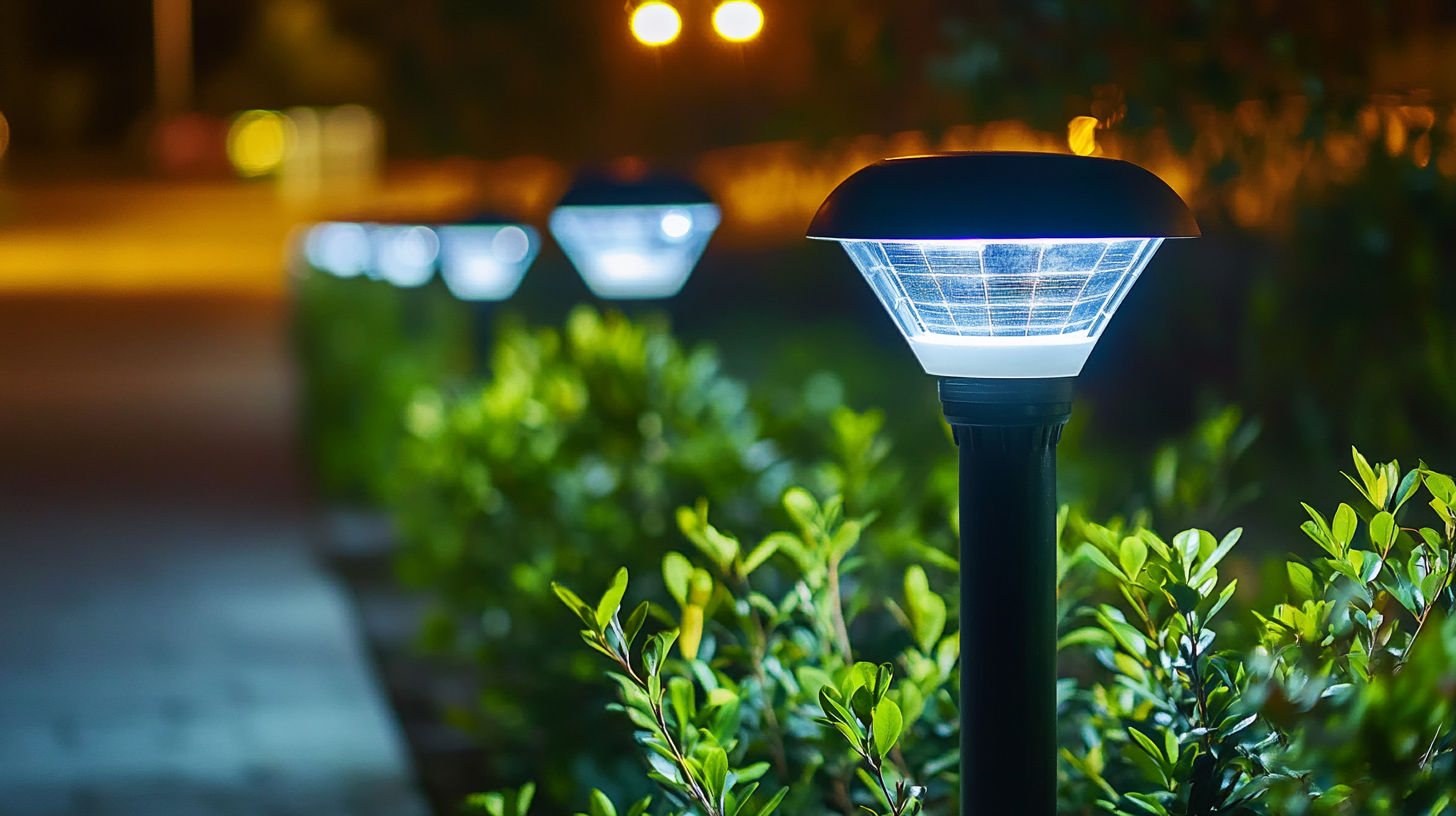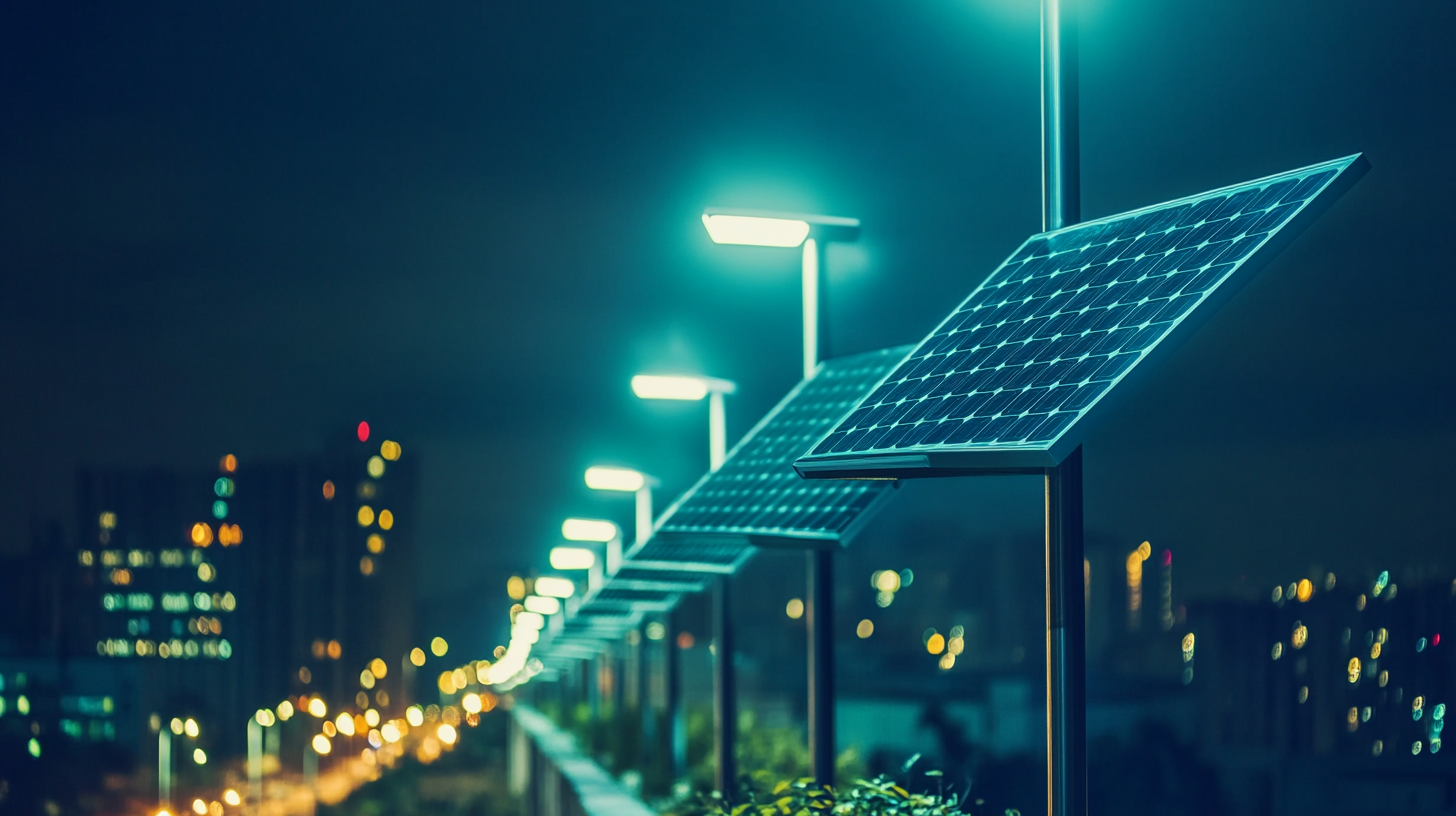Essential Tips for Sourcing Solar Landscape Lighting Globally
As the demand for sustainable energy solutions continues to rise, solar landscape lighting has emerged as a popular choice for both residential and commercial applications. According to a recent report by MarketsandMarkets, the global solar lighting market is projected to reach $11.4 billion by 2025, expanding at a CAGR of 12.1%. This growth is fueled by increasing awareness of energy efficiency and the need for environmentally-friendly outdoor lighting options. With advancements in solar technology, sourcing high-quality solar landscape lighting has become more accessible, allowing businesses and homeowners to enhance their outdoor spaces while reducing their environmental footprint.
However, successfully sourcing solar landscape lighting on a global scale requires a nuanced approach. Factors such as product quality, supplier reliability, and compliance with international standards play a crucial role in ensuring that the sourced products meet consumer expectations. A survey by Allied Market Research indicates that approximately 40% of consumers prioritize durability and longevity in outdoor lighting solutions. Therefore, understanding the critical elements of sourcing solar landscape lighting not only facilitates better purchasing decisions but also contributes to the growing trend of sustainable living.

Understanding the Global Market for Solar Landscape Lighting
The global market for solar landscape lighting is expanding rapidly as awareness of sustainable energy solutions grows. This innovative lighting technology is not only environmentally friendly but also cost-effective, making it an attractive option for both homeowners and businesses. As cities and communities prioritize green initiatives, solar landscape lighting serves as a vital component in enhancing outdoor spaces while minimizing carbon footprints.
Understanding the dynamics of different regional markets is essential for successful sourcing. Countries with ample sunlight, such as those in the Americas, Asia, and parts of Africa, present a lucrative opportunity for solar lighting manufacturers. Local regulations and consumer preferences can significantly vary, emphasizing the importance of thorough market research. Buyers should consider factors such as product durability, aesthetics, and energy efficiency to meet diverse demands while upholding quality standards.
Collaborating with reliable suppliers who understand these regional nuances can facilitate smoother transactions and foster long-term partnerships. Trade shows, industry forums, and online platforms are excellent resources for connecting with potential suppliers and gaining insights into the latest innovations in solar technology. By navigating the global market effectively, businesses can capitalize on the growing trend of solar landscape lighting and contribute to a more sustainable future.

Identifying Reliable Suppliers and Manufacturers Worldwide
When sourcing solar landscape lighting globally, identifying reliable suppliers and manufacturers is crucial for the success of your project. A well-functioning supply chain can be the backbone of your business, ensuring you have access to quality products at competitive prices. In today’s dynamic market, utilizing supplier identification and evaluation services can help navigate the complexities involved in finding trustworthy partners. These services allow businesses to assess potential suppliers based on quality, cost, and delivery performance, helping to mitigate risks and streamline sourcing processes.
Moreover, leveraging technology plays a vital role in modern supplier identification. Advanced tools powered by artificial intelligence enable businesses to discover new suppliers in a fraction of the time it traditionally takes. With many industries facing disruptions due to various factors, having a responsive supply chain becomes paramount. By engaging with suppliers who adhere to sustainable practices and maintain transparency, companies can create equitable and safe supply chains, which not only benefits their reputation but also contributes to a positive global impact. As the landscape of global manufacturing continues to evolve, focusing on reliable partnerships will be essential for any business looking to thrive in the solar lighting market.

Evaluating Quality Standards and Certifications for Solar Lighting
When sourcing solar landscape lighting globally, understanding quality standards and certifications is crucial to ensure the investment is worthwhile. Different regions may have varying regulations, and familiarizing oneself with these standards can lead to better purchasing decisions. For instance, certifications like CE in Europe, UL in the United States, and other local certifications help benchmark the safety and efficiency of solar products. These certifications not only indicate compliance with safety norms but also signify that the products have undergone rigorous testing, assuring consumers of their reliability and performance.
Moreover, it's essential to evaluate the durability of the solar lighting systems in the context of the specific environmental conditions they will face. Products should meet weather resistance ratings and have access to warranties that cover this. For example, look for products rated IP65 or higher, which means they are dust-tight and can withstand water jets, making them suitable for outdoor use. These quality markers reflect the manufacturer’s commitment to providing dependable products that can endure harsh climates, ensuring long-term value.
Lastly, it's beneficial to seek manufacturers that prioritize transparency in their sourcing and production processes. Certifications that align with sustainability goals, like RoHS or Energy Star, indicate a focus on eco-friendly materials and processes. By choosing products with these quality standards and certifications, buyers can rest assured they are investing in sustainable and reliable solar landscape lighting solutions that meet global quality benchmarks.

Sustainable Practices in Sourcing Solar Landscape Lighting
Sourcing solar landscape lighting sustainably is more than just a trend; it is a necessity for protecting our planet while enhancing outdoor spaces. When looking to procure these products globally, organizations must prioritize suppliers who adhere to sustainable manufacturing practices. This includes utilizing renewable materials and minimizing carbon footprints during production. For instance, opting for manufacturers that source their materials locally can significantly reduce transportation emissions, aligning with a more eco-friendly supply chain.
Another crucial aspect of sustainable sourcing is the design and efficiency of the lighting solutions themselves. It is imperative to select products that utilize advanced solar technology, which not only ensures longer operational hours but also maximizes energy efficiency. When evaluating potential suppliers, consider those who invest in research and development to innovate more efficient solar panels and batteries. This commitment to ongoing improvement reflects a dedication to sustainability that should resonate with conscientious buyers.
Furthermore, transparency in the supply chain is key to sustainable sourcing. Companies should seek partners who provide clear information about their sourcing policies, labor practices, and environmental impact. By supporting suppliers who are committed to social responsibility and sustainability, businesses can contribute to a healthier planet while receiving high-quality solar landscape lighting that meets consumer demands for both functionality and aesthetics.
Cost Management Strategies for Importing Solar Products Globally
When it comes to importing solar landscape lighting, effective cost management is paramount for businesses looking to maximize their investment. One key strategy is to thoroughly research suppliers and their pricing structures. By comparing quotes from multiple international manufacturers, companies can identify competitive rates and understand the factors influencing costs, such as materials, quality, and shipping. This knowledge empowers businesses to negotiate better deals and ensure they are not overpaying for their products.
Another essential approach is to consider the shipping and logistics aspects of importing solar products. Shipping costs can vary significantly based on the mode of transport, route, and time of year. Opting for bulk shipments can mitigate per-unit shipping expenses, while working with a reliable freight forwarder can streamline the process and provide insights into the most cost-effective shipping methods. Additionally, being aware of import duties and tariffs is crucial, as these hidden costs can substantially affect the overall price.
Lastly, it's beneficial to cultivate strong relationships with suppliers globally. Establishing trust and clear communication can lead to better pricing agreements and flexibility on future orders. Many suppliers may offer discounts for repeat business or bulk purchases, which can significantly reduce costs. By focusing on long-term partnerships, businesses not only save money but also gain reliable access to quality products in the ever-evolving solar market.





